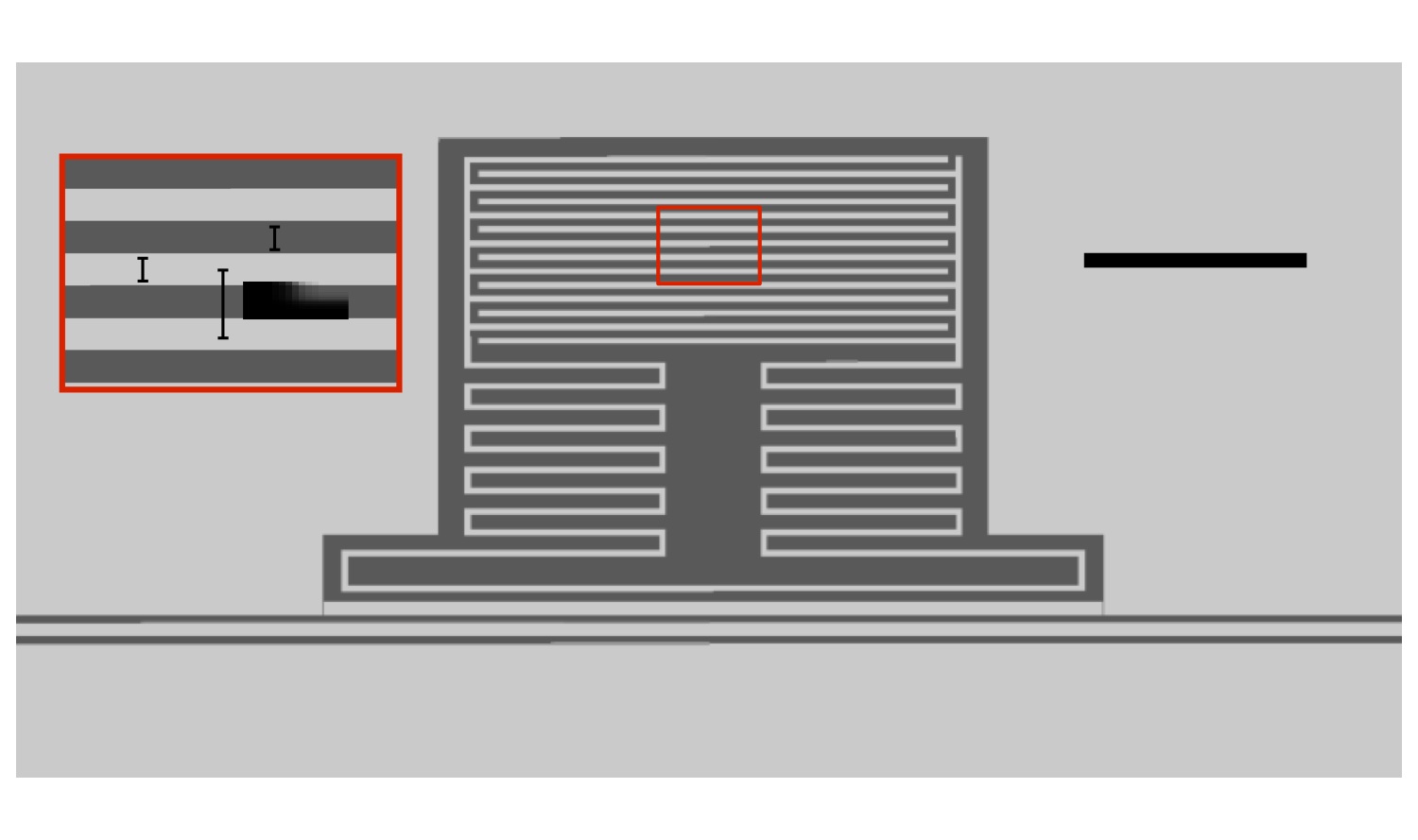The coherence of superconducting devices based on Josephson tunnel junctions is limited by intrinsic excitations in amorphous oxides. At temperatures below 1K, these quantum excitations emerge as a consequence of the inherent disorder of the material and are commonly regarded as two-level systems. Microwave photons, used to store and manipulate quantum states in superconducting qubits, undergo resonant interactions with two-level systems resulting in the dissipation of energy.
We employ different types of superconducting resonators to study the physics of two-level systems present in different dielectric materials. Using a variety of fabrication techniques, we can learn about the intrinsic properties of two-level systems and how to improve the quality factors of the resonators we design.
Figure 1: Optical image of a superconducting lumped-element resonator. The darker areas are the silicon substrate while the lighter areas are aluminum. The scale bar is 100$latex ~mumathrm{m}$.
[1] Deng et al., Journal of Applied Physics 114, 054504 (2013).
[2] Deng et al., Appl. Phys. Lett. 104, 043506 (2014).

